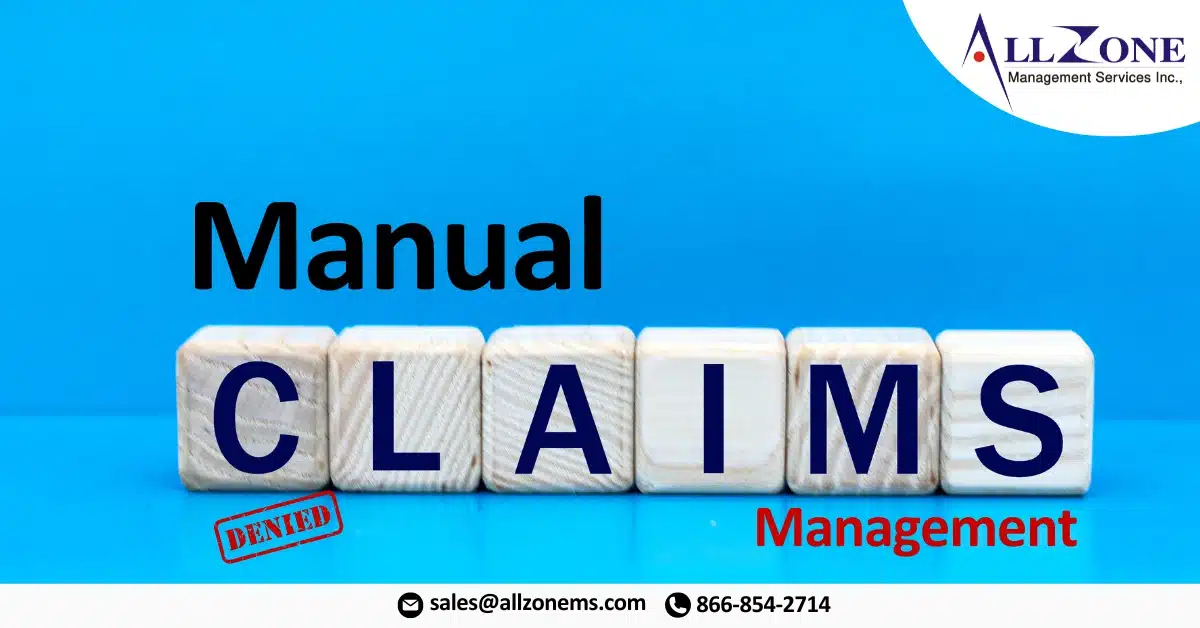Healthcare providers face mounting financial pressures due to rising operational costs, evolving regulatory requirements, and shrinking reimbursement rates. One of the most critical areas affecting revenue cycle efficiency is claims denial management. Despite advancements in technology, many healthcare organizations still rely on manual claims denial management, leading to inefficiencies, revenue leakage, and administrative burdens.
This blog explores why manual claims denial management may be your weakest link and how automation can optimize the process, especially when partnering with a reputable medical billing company that offers comprehensive medical billing services.
The Growing Challenge of Claims Denials:
Denied claims are a persistent issue in medical billing, with an industry-wide denial rate ranging from 5% to 15%. In some cases, certain payers and specialties experience denial rates exceeding 20%, making denial management a crucial component of revenue cycle management (RCM). Common reasons for claim denials include:
- Coding Errors: Incorrect or outdated medical codes (ICD-10, CPT, HCPCS) can trigger automatic denials.
- Incomplete Documentation: Missing patient information or insufficient medical necessity documentation.
- Authorization Issues: Lack of prior authorization or failure to meet payer-specific requirements.
- Duplicate Claims: Submitting identical claims, which are often denied as duplicates.
- Timely Filing Issues: Missing payer deadlines for claim submission or appeal requests.
With such a complex landscape, relying on manual processes to identify, correct, and resubmit denied claims can lead to inefficiencies and lost revenue. This is where a medical billing company specializing in medical billing services can be invaluable.
Why Manual Denial Management Fails:
Manual denial management remains a weak point for many healthcare providers due to several inherent challenges:
- Time-Consuming and Labor-Intensive: RCM teams must manually track, analyze, and correct denied claims, often reviewing paper-based records or spreadsheets. This labor-intensive approach slows down the revenue recovery process and increases administrative workload.
- Increased Risk of Human Error: Manually handling claims denials increases the risk of errors and oversight. Missed deadlines, misinterpretation of payer guidelines, and incorrect claim corrections can result in further denials or lost revenue opportunities.
- Lack of Real-Time Insights: Manual processes do not provide real-time analytics on denial trends. Without data-driven insights, healthcare providers struggle to identify systemic issues and proactively address recurring denial causes.
- Inefficient Appeal Processes: Many providers lack structured workflows to efficiently manage appeals. Staff must manually locate supporting documents, draft appeal letters, and track payer responses—prolonging reimbursement cycles.
- Revenue Leakage and Financial Strain: Due to slow turnaround times and limited follow-up capacity, a significant percentage of denied claims go unchallenged, leading to permanent revenue loss. Studies show that providers recover only 60% of denied claims, leaving substantial revenue uncollected.
The Shift Toward Automated Denial Management
Automation is transforming denial management by streamlining workflows, reducing errors, and accelerating claim recovery. Advanced technologies such as AI-driven analytics, robotic process automation (RPA), and machine learning (ML) are revolutionizing how healthcare providers handle claim denials. Reputable outsource medical billing companies offering medical billing services are often at the forefront of implementing these technologies.
Key Benefits of Automating Denial Management
- Faster Claim Resolution: Automation accelerates claim correction and resubmission, reducing the time taken to resolve denials and improving cash flow.
- Enhanced Accuracy: AI-driven tools minimize coding and billing errors, ensuring claims are submitted correctly the first time and reducing the likelihood of denials.
- Data-Driven Insights: Automated denial management systems provide real-time analytics and reports, helping providers identify common denial trends and implement corrective actions.
- Efficient Appeals Process: Automation enables template-driven appeal letters, real-time tracking of appeal deadlines, and faster document retrieval—ensuring a higher success rate in appeals.
- Improved Compliance: By integrating payer rules and regulatory guidelines into automated systems, providers can ensure compliance and avoid denials related to non-adherence.
- Scalability and Cost Savings: Automation reduces the need for manual intervention, lowering administrative costs and allowing RCM teams to focus on high-value tasks like patient engagement and revenue optimization.
Best Practices for Implementing Automated Denial Management
Transitioning from manual to automated denial management requires careful planning and execution. Here are some best practices to ensure a seamless implementation:
- Assess Current Denial Trends: Conduct a thorough analysis of your existing denial rates, common denial reasons, and recovery success rates to identify key problem areas.
- Invest in AI-Powered RCM Solutions: Leverage AI-driven RCM platforms that integrate with your existing EHR and billing systems to automate claim tracking, correction, and resubmission. Partnering with a medical billing company can provide access to these advanced solutions.
- Standardize Workflows: Establish standardized denial management workflows to streamline corrections, appeals, and follow-up procedures.
- Train Staff on Automation Tools: Provide comprehensive training for billing and coding teams to effectively use automation tools and analytics dashboards.
- Monitor and Optimize Performance: Continuously track denial trends and adjust RCM strategies based on real-time data insights to improve long-term financial outcomes.
Conclusion:
Manual claims denial management is a significant bottleneck in healthcare revenue cycle operations. The inefficiencies, errors, and revenue losses associated with manual processes make it imperative for healthcare providers to embrace automation. By leveraging AI, machine learning, and RPA-powered denial management systems, or by partnering with a medical billing company that offers comprehensive medical billing services, providers can reduce denials, streamline workflows, and optimize revenue recovery.
Is your organization still struggling with manual denial management? It’s time to make the shift to automation and ensure that claims denials no longer drain your financial resources.

